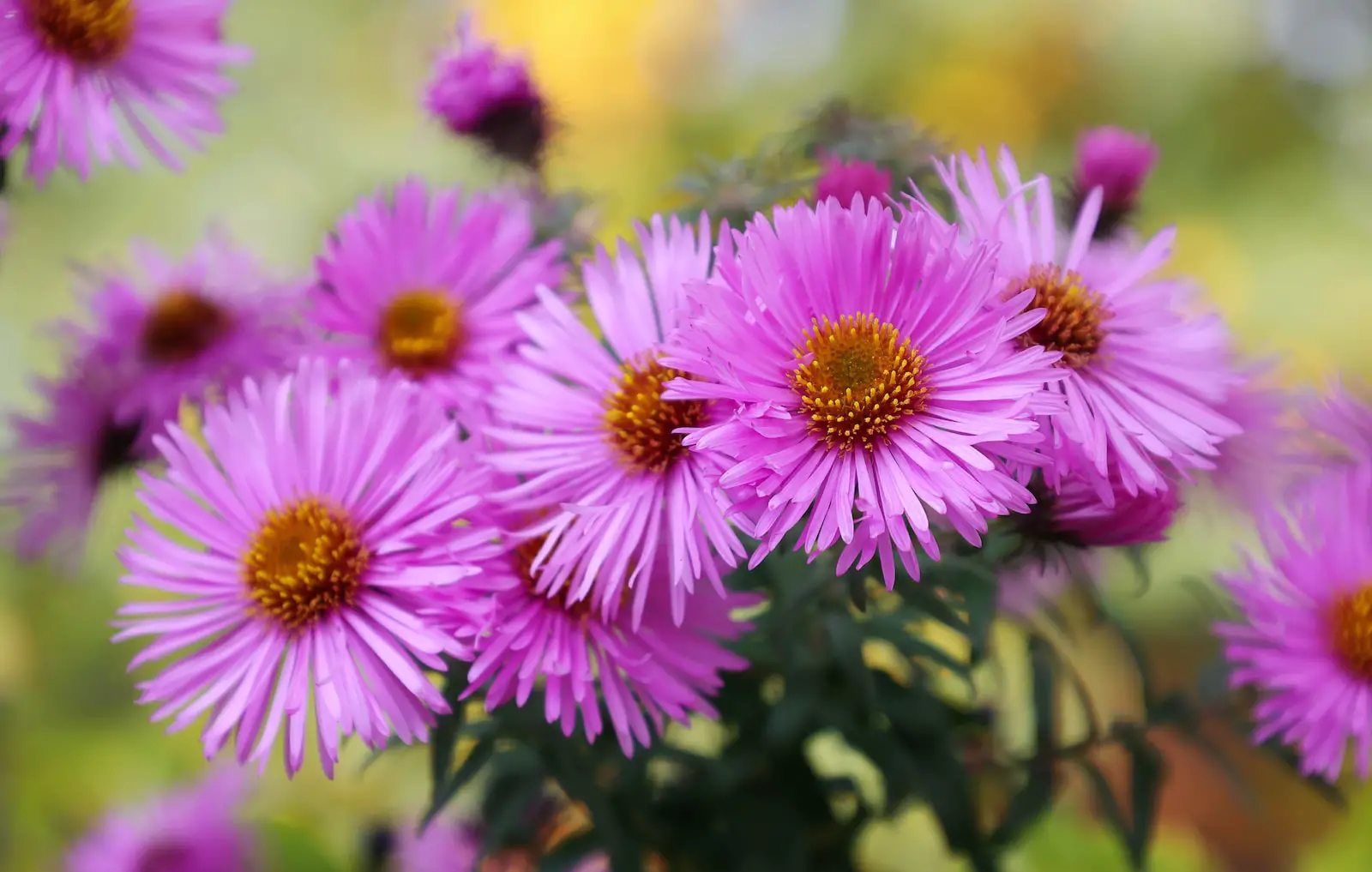Asters are a popular garden flower known for their star-shaped blooms and vibrant colors, including shades of blue, pink, purple, and white. Belonging to the Asteraceae family, these perennials bring life and color to gardens in late summer and fall, providing beauty when many other plants have finished blooming.
There are many species of asters, with some native to North America and others found in Europe and Asia. They have been part of human culture for centuries, often symbolizing love, wisdom, and faith. Whether you are looking to add late-season color to your garden or simply appreciate them in their natural habitat, asters are a joy to behold.
Asters are not just beautiful; they are also functional. They attract pollinators like bees, butterflies, and birds, thus playing a crucial role in the ecosystem. Their ease of care and adaptability make them an excellent choice for both novice and experienced gardeners.
| Attribute | Details |
|---|---|
| Common Names | Aster, Starwort |
| Botanical Name | Aster spp. |
| Family | Asteraceae |
| Plant Type | Perennial Flower |
| Mature Size | 1-5 feet tall |
| Sun Exposure | Full Sun to Partial Shade |
| Soil Type | Well-Drained, Average Soil |
| Hardiness Zones | 4-8 |
| Native Area | North America, Europe, Asia |
Aster Care
Caring for asters is generally straightforward, making them an attractive option for many gardeners. They thrive in well-drained soil and require full sun to partial shade. Adequate spacing is essential to provide good air circulation and prevent disease.
Watering should be consistent but not excessive, as asters are somewhat drought-tolerant once established. Fertilizing can be done in the spring, and a layer of mulch can help retain moisture and suppress weeds. Regular deadheading will encourage more blooms, and cutting back in late fall will prepare the plants for winter.
Light Requirement for Asters
Asters grow best in full sun but can tolerate partial shade. In areas with very hot summers, some afternoon shade might be beneficial. A minimum of 6 hours of sunlight is usually recommended to promote healthy growth and abundant flowering.
Soil Requirements for Asters
Asters prefer well-drained soil with average fertility. They are not overly particular about soil pH but generally thrive in a range of 5.8 to 6.5. Amending the soil with compost or other organic matter can improve drainage and nutrient content.
Water Requirements for Asters
While asters are relatively drought-tolerant once established, they do benefit from consistent watering, especially during dry spells. Overwatering or poor drainage can lead to root rot, so it is crucial to avoid soggy soil.
Temperature and Humidity
Asters are hardy in zones 4-8 and can withstand a wide range of temperatures. They generally prefer moderate humidity, but proper spacing and good air circulation can help prevent issues in more humid areas.
Fertilizer
A balanced fertilizer applied in early spring can give asters a good start for the season. Over-fertilizing can lead to weak, leggy growth, so it is essential to follow the product’s instructions and not overdo it.
Pruning Asters
Pruning asters by pinching back the tips in late spring can encourage bushier growth and more blooms. Deadheading spent flowers throughout the season will also promote continuous blooming. Cutting back the plants in late fall helps prepare them for winter.
Propagating Asters
Asters can be propagated by division in early spring or fall. This is an excellent way to rejuvenate older plants and create new ones. Cuttings and root division are common methods used by gardeners.
How To Grow Asters From Seed
Growing asters from seed is a rewarding process. Seeds can be sown indoors 6-8 weeks before the last frost date or directly outdoors in early spring. Stratification may improve germination rates, and seedlings should be transplanted with proper spacing once they are established.
Common Pests & Plant Diseases
Aphids
Managing with insecticidal soap or natural predators can control aphids.
Powdery Mildew
Good air circulation and proper watering techniques can prevent this common fungal disease.
Rust
Remove affected leaves and apply a fungicide if necessary.
Common Problems With Asters
Leggy Growth
Caused by too much nitrogen or not enough sunlight, proper fertilization and location can prevent this problem.
Poor Flowering
Lack of blooms may result from inadequate sunlight or over-fertilizing. Ensure proper light and follow fertilizer instructions.
Pro Tips
- Plant asters in full sun to partial shade for best results.
- Provide well-drained soil and avoid overwatering.
- Space plants properly for good air circulation.
- Deadhead regularly to encourage continuous blooming.
- Divide older plants to rejuvenate and propagate.
- Watch for pests like aphids and diseases like powdery mildew.
- Consider local native species for additional environmental benefits.

